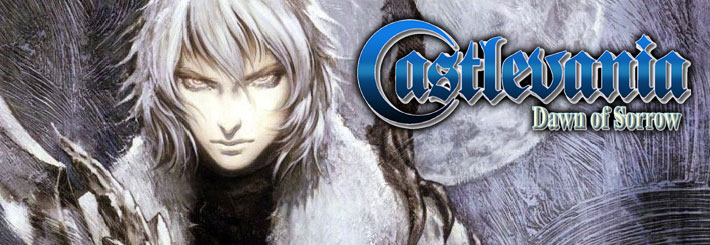Enemy Study: Castlevania Dawn Of Sorrow
The next major step in Aztez is taking our enemies to the next level. We've had enemies for a long time now, and while they currently have distinct mechanical identities, they're missing a couple crucial features. Some of them I'm going to save for a future post, but the major feature they're missing now is the ability to control YOU, the player. A good friend and design mentor says it best. "Good action games set the pace for the player." What he's referring to the is a game's abilities to raise meaningful hurdles for the player that they must get themselves over in a fun and challenging way. So before I got in there and shook up my enemies in a major way, I wanted to do some studies. The first one has been of Castlevania: Dawn Of Sorrow for the Nintendo DS.

All I did for this study was get a piece of paper and a pencil and start a new game. The rule was that whenever I encountered a new enemy, I had to take a couple very quick notes on their movement pattern, remarkable properties, attacks (if any), and most importantly, their REQUIREMENT. What I mean by "requirement" is the player behavior required to move past or kill the enemy. I wanted to start developing a specific library of meaningful hurdles to draw from. Castlevania games throw hundreds of different types of enemies at you! And while they all have very straightforward behaviors, dealing with them is oftentimes not at all straightforward. It's one of the many incredible things about these airtight action games, and it seemed like a good place to start taking notes. Anyway, here are the notes (click on the image to zoom in).
Obviously this doesn't even scratch the surface of the gold mine this game has buried inside of it in terms of meaningful hurdles, but even in this sampling of very early enemies there is incredible creativity and challenge. I realize this is terribly abstracted, and I realize beautiful essays could be written on individual enemies. But this is just a springboard, and in the next post I'm going to share a much more intricate dissection of Devil May Cry 4's UH-MAZING cast of enemies, which are much fewer in number but more individually nuanced. If you want to talk about any of these enemies, just bounce on into the comments there and I'll rap with you.
SORRY ABOUT THE CHICKEN SCRATCH.
-
SonofMakuta
-
Sam250
-
Ben Ruiz
-
-
RexT99
-
Ben Ruiz
-
-
Chris Wagar
-
Ben Ruiz
-
-
Victor Borges Angelo
-
Chris Wagar
-
-
Tombrien
